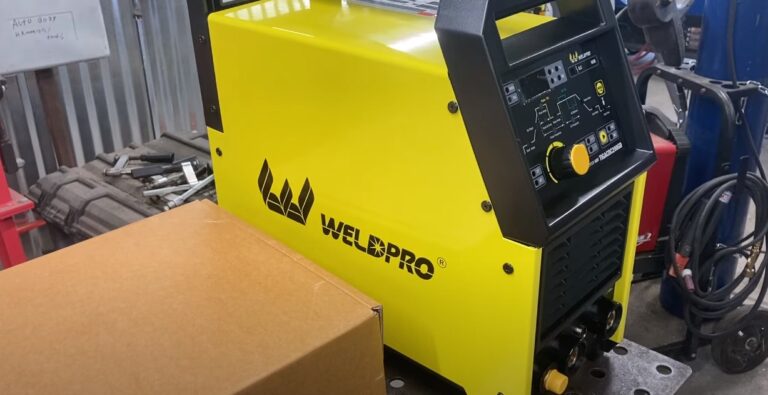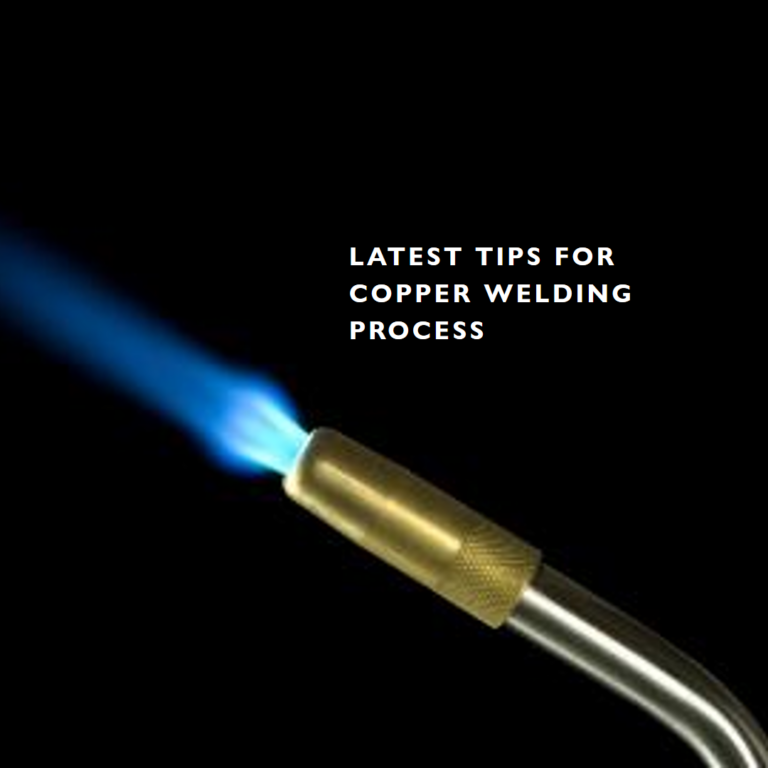Underwater welding, also referred to as hyperbaric or wet welding, takes place in aquatic environments under intense water pressure. Steel is the most commonly welded metal due to its strength and ubiquity in marine settings. Wet welding occurs directly in water, while dry hyperbaric welding takes place in sealed, pressurized enclosures.
Dry hyperbaric welds often demonstrate higher quality than wet welds since environmental factors like heat can be more precisely controlled. However, assessing wet weld quality can prove challenging as flaws may be obscured. Pioneered in 1932, underwater welding now maintains ships, offshore platforms, pipelines, and subaquatic infrastructures globally.
Though fundamentally similar to land-based welding, underwater welding necessitates advanced training, certification, and skill to mitigate exceptional risks posed by the underwater environment. Safety protocols are stringent, as electric charge and aquatic environments require caution. Besides electrocution, pressure-related injuries and limited visibility intensify danger. Still, some choose this career for the excitement and robust compensation it offers. This article describes how much they make.
How does welding work Underwater?
There are primarily two forms of underwater welding utilized by skilled welder-divers: dry welding and wet welding. When assigned an underwater project, managers and experienced welder-divers thoughtfully select the optimal process to suit the project’s particular requirements. Each form of underwater welding has its specific applications, advantages and techniques.
Dry welding
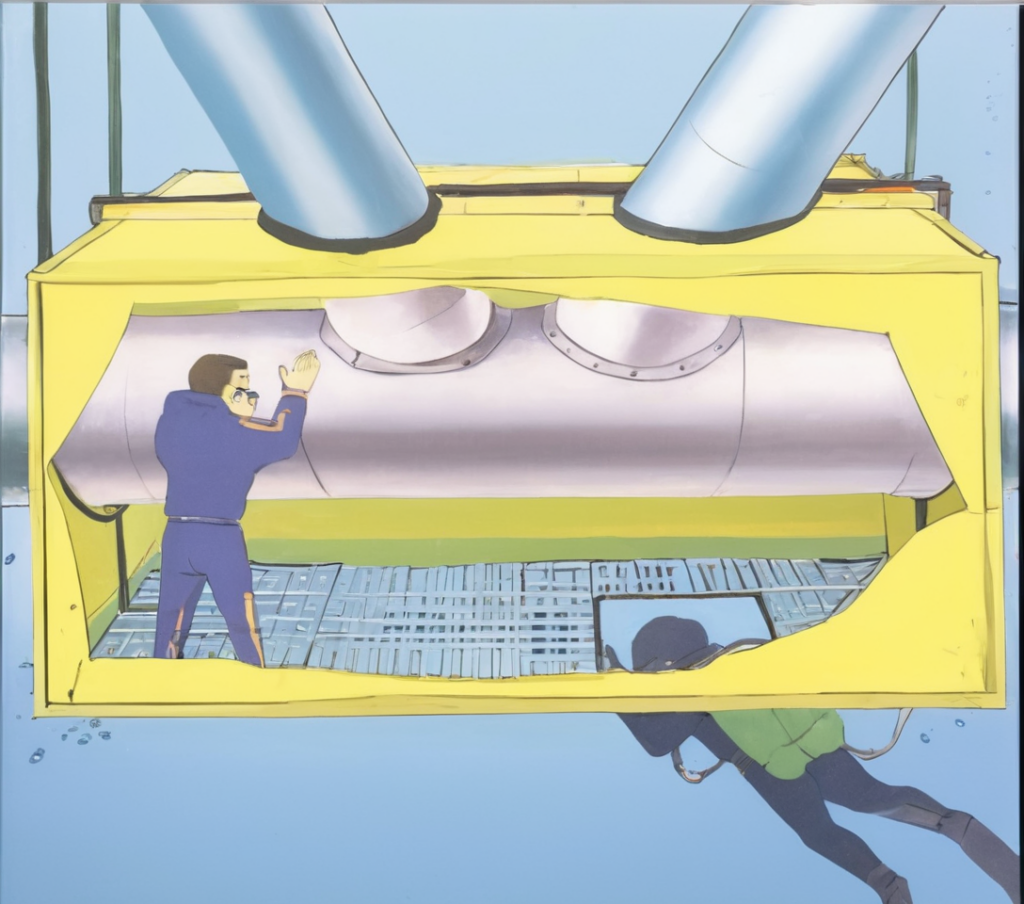
When structural repairs are needed on submerged assets, welder-divers employ specialized techniques to apply welds in aquatic environments. The optimal approach depends on factors like water depth, urgency, and access to support equipment.
Dry habitat welding utilizes pressurized chambers to create temporary dry conditions around the work site, allowing conventional arc welds with shielding gas. The sealed hyperbaric enclosures are mated to the structure then flooded with gas mixtures of oxygen and helium to displace water before welding commences. Chambers must be pressurized equivalently to ambient water pressure, protecting worker safety at depth. Common habitat configurations range from entire workspaces to localized tents. When facilities and time permit habitat methods, longer welds can be executed precisely.
Yet for some in situ repairs, the priority is immediate action with portable gear. Direct wet welds can be laid manually despite ocean currents, using manual electrodes and waterproof power sources. While visibility and quality control are reduced, wet methods offer agility in field repairs. Technique selection balances operational needs with diver stamina over prolonged welding shifts.
With training in both dry and wet methods, underwater welders adapt across this unique environment. Careful preparation preserves safety and workmanship, bringing resilient infrastructure back into working order.
Wet welding
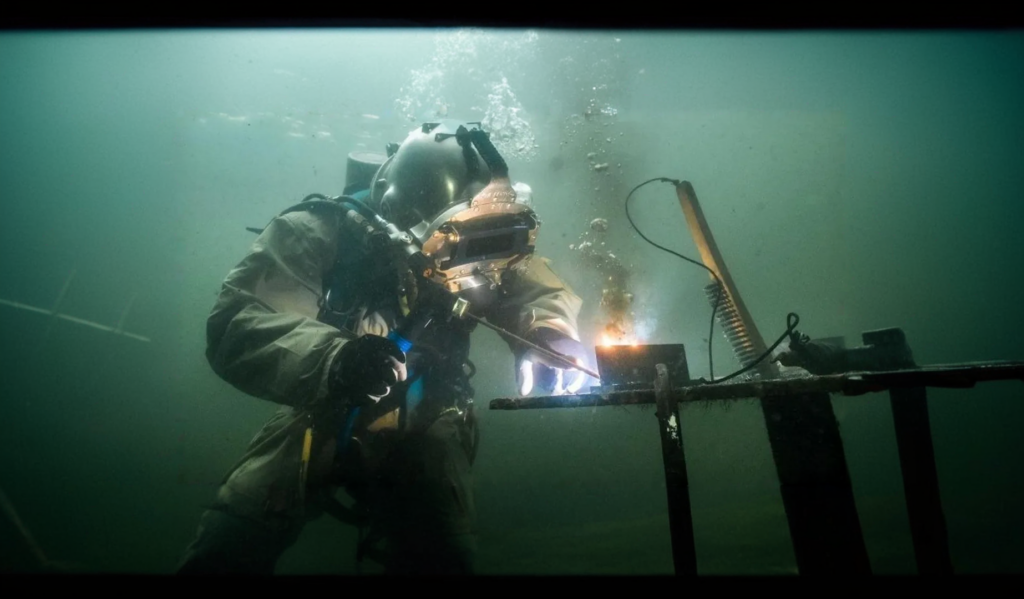
Most of the time, divers use Shielded Metal Arc Welding (SMAW) or “stick welding” as it is the most cost-effective and versatile method for wet welding. Diver-welders meticulously maintain electrode cleanliness as they initiate an electric arc, generating 300 to 400 amps of direct current (DC) underwater. The key safety measure involves a dense layer of gaseous bubbles emitted by the electrode’s flux, effectively shielding the weld from water, corrosive gases, and oxidizing compounds.
Diver-welders, ensuring a hazard-free environment, carefully inspect the surroundings for obstructions before commencing the weld. While stick welding remains the go-to method, alternative approaches like Flux-cored Arc Welding (FCAW) and Friction Welding (FW) are also prevalent for welding nickel-based alloys and cast iron metals underwater.
In the realm of underwater welding, the reliance on gaseous bubbles around the electric arc creates a protective shield, preventing electricity from conducting through the water. This insulation shields the diver but presents challenges such as obscured welding areas and potential defects like cracking due to disturbances in the welding pool and rapid cooling.
To mitigate these challenges, underwater welding predominantly opts for direct current (DC) settings over alternating current (AC), prioritizing safety and effectiveness. This emphasis on safety and precision underscores the intricate and specialized nature of underwater welding, making it a vital skill in the maritime industry.
Where underwater welding is used ?
The nature of the work involves welding structures beneath the water surface, and while it presents significant challenges and dangers, its applications are diverse and crucial in several industries. Here is an in-depth exploration of where underwater welding is commonly used, based on the provided example:
Offshore and Marine Applications:
- Underwater welding finds widespread use in offshore and marine environments. The challenges associated with this type of welding often lead to the preference for carrying out the work in shallow waters or by relocating structures to dry areas first.
- In cases where structures are welded at greater depths, significant cost savings can be achieved. This is particularly advantageous as it eliminates the need to remove a structure from the water and also reduces dry docking costs.
Cost Savings and Emergency Repairs:
- The primary advantage of underwater welding is the potential for cost savings. When structures can be welded in place without the need for removal or dry docking, it significantly reduces the overall project expenses.
- Underwater welding is not only a cost-effective solution but is also employed for emergency repairs. The ability to conduct repairs beneath the water surface without relocating structures can be crucial in situations where immediate intervention is necessary.
Structures Welded Underwater:
- Underwater welding is applied to weld fully or partially submerged marine structures. This includes a wide range of installations such as ships, dams, oil rigs, pipelines, and bridges.
- The versatility of underwater welding techniques allows for its application in different environments and structures. This includes both permanent structures like oil rigs and temporary structures like ships.
Diverse Industry Applications:
- Apart from offshore and marine settings, underwater welding techniques are also utilized in various other industries. This includes applications related to nuclear power stations, where precision welding is required in challenging underwater conditions.
- Rivers, canals, and other water bodies also benefit from underwater welding, especially in instances where submerged structures need maintenance or repair.
Dangers of Underwater Welding
Welder-divers, including engineers and managers, who engage in underwater welding must be experts in their craft and fully prepared to navigate the various risks associated with this demanding environment. The dangers of underwater welding arise from the convergence of different factors, including atmospheric gases, water and gas pressures, specialized diving and welding equipment, limited space, and the presence of water and electric current supply. Here, we will delve into the specific dangers and safety precautions associated with underwater welding.
Drowning:
- Cause: Drowning incidents often result from Delta P hazards, also known as differential pressure. This occurs when there is a significant water pressure difference, causing a diver to become stuck in a bottleneck where water rushes to fill another space with great force, reaching pressures exceeding a thousand pounds.
- Prevention: Safety precautions to prevent drowning include being tethered to the surface, having another welder-diver to assist and monitor, and maintaining constant communication with the team throughout the welding operation.
Explosions:
- Cause: Explosions can occur when hydrogen and oxygen gases mix and accumulate in pockets.
- Prevention: To prevent explosions, it is crucial for underwater welders to follow strict safety protocols and be well-versed in gas handling procedures.
Electric Shocks:
- Cause: The combination of water and electricity poses a significant risk, especially if inexperienced welders fail to use direct current (DC) for power supply.
- Prevention: Proper training and adherence to safety guidelines, including the use of DC, are essential to mitigate the risk of electric shocks.
Decompression Sickness:
- Cause: Decompression sickness is a common concern in underwater diving and is caused by the build-up of nitrogen bubbles in the bloodstream.
- Prevention: Welder-divers must adhere to strict dive tables and decompression schedules to minimize the risk of decompression sickness.
Hypothermia:
- Cause: Working in dark and cold water conditions for extended hours can lead to hypothermia.
- Prevention: Adequate thermal protection, such as specialized diving suits, is essential to prevent hypothermia. Regular breaks and warm-up periods are also crucial.
In addition to these dangers, safety precautions are integral to minimizing risks during underwater welding operations. These precautions include being tethered to the surface to facilitate a quick rescue, having a second welder-diver to assist and monitor the primary welder, and maintaining constant communication with the team throughout the welding process.
Fortunately, individuals aspiring to pursue a career in underwater welding can undergo comprehensive training through welding courses. These courses equip prospective underwater welders with the necessary skills and knowledge to navigate the challenging conditions associated with underwater welding safely.
Conclusion
Despite the challenges and risks associated with underwater welding, it remains a lucrative and indispensable profession. The techniques employed in underwater welding are crucial for the maintenance and repair of various marine structures and assets. This includes essential infrastructure such as offshore pipelines, oil rigs, ships, and even extends to demanding environments like nuclear power plants.
In essence, underwater welders play a vital role in ensuring the integrity and functionality of critical structures beneath the water’s surface. Their expertise is not only sought after in routine maintenance tasks but also in addressing unforeseen issues that may arise in challenging underwater conditions.
How do underwater welders not get shocked?
They use special equipment and techniques to prevent electric shocks. For wet welding, they use direct current (DC) electricity, which is safer than alternating current (AC) electricity in water. They also wear rubber gloves and suits to insulate themselves from the electric arc. For dry welding, they work inside a sealed chamber that is filled with gas and has no water contact.
How long do underwater welders stay underwater?
The length of time underwater depends on several factors such as depth, type of welding, environmental conditions and safety regulations. Generally, wet welders can be underwater for up to 30 minutes at a time, while dry welders can work in the chamber for several hours. However, for both types, decompression procedures must be followed to avoid health risks.
How do underwater welders breathe?
For wet welding, they use surface-supplied air or mixed gas diving systems, which provide a continuous flow of breathing gas through a hose and a mask or a helmet. For dry welding, they breathe the gas mixture that is pumped into the chamber, which usually contains oxygen and helium.
How hard is it to weld underwater?
Underwater welders face many difficulties, such as poor visibility, water pressure, temperature changes, currents, marine life, and potential hazards from the welding process. They also need to be certified as both welders and divers, and undergo rigorous training and testing.

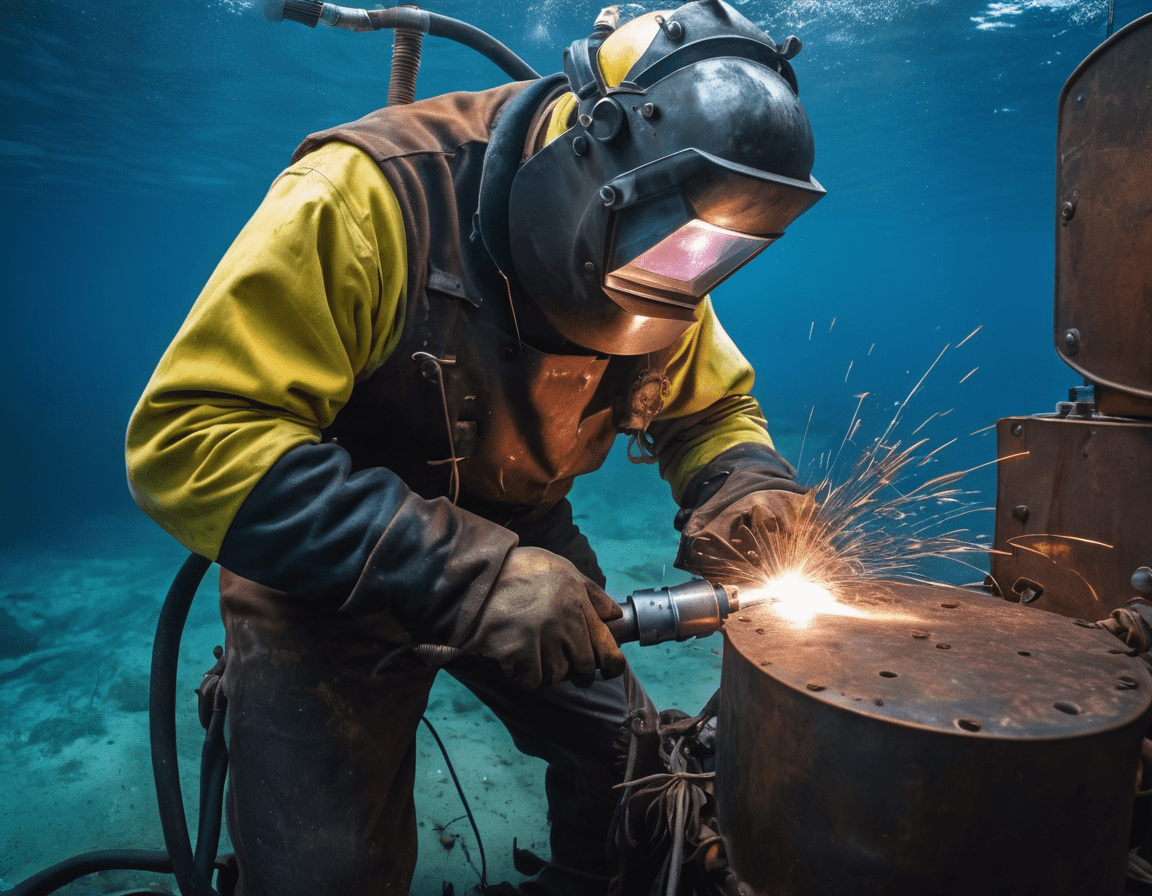


![How Much Do Underwater Welders Make [Avg Salary 2024] How Much Do Underwater Welders Make [Avg Salary 2024]](https://welding-world-awards.com/wp-content/uploads/2023/12/underwater-welding-salaries-768x768.png)
